Mexico’s president has warned that Hurricane Patricia still poses a threat of floods and landslides as it brings heavy rain to parts of the country.
President Enrique Pena Nieto said Patricia – the strongest storm recorded in the Americas – had so far caused less damage than feared.
The US National Hurricane Centre said the hurricane hit as a Category Five storm – the highest classification.
It is now “rapidly weakening” over Mexico, the centre said.
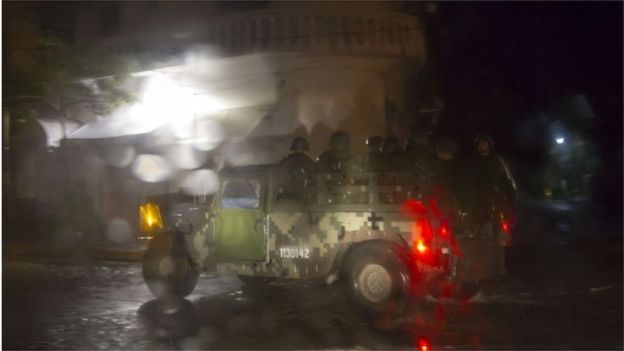
Hurricane Patricia brought heavy rain to Mexico’s Pacific coast as it approached on Friday
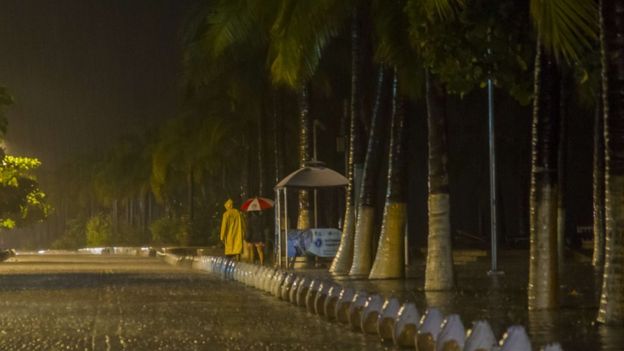
The damage caused by rain and high winds has so far not been as bad as feared
The storm touched down in western Mexico on Friday, bringing destructive winds and rain, but heavy damage appears to have been avoided.
The NHC said winds had decreased to 120 km/h (75 mph) as Patricia rapidly weakened over land, making it a Category One storm, and the centre forecasts that it will dissipate by Saturday night.
While still over the ocean, Patricia had winds of 325 km/h (200 mph) at its peak, which made it the most powerful hurricane ever recorded in the Western hemisphere.
Thousands of residents and tourists on Mexico’s Pacific coast were evacuated and moved inland.
Patricia is now moving north-northeastward inland over northern Mexico.
The states of Nayarit, Jalisco, Colima, Michoacan, and Guerrero are in particular danger from the high rainfall expected on Saturday, the centre says.
Total rainfall of 20-30cm (8 to 12 inches) – with isolated maximum amounts of 50cm (20 inches) – is “likely to produce life-threatening flash floods and mudslides,” it added.

Residents of Puerto Vallarta were evacuated from their homes ahead of the hurricane
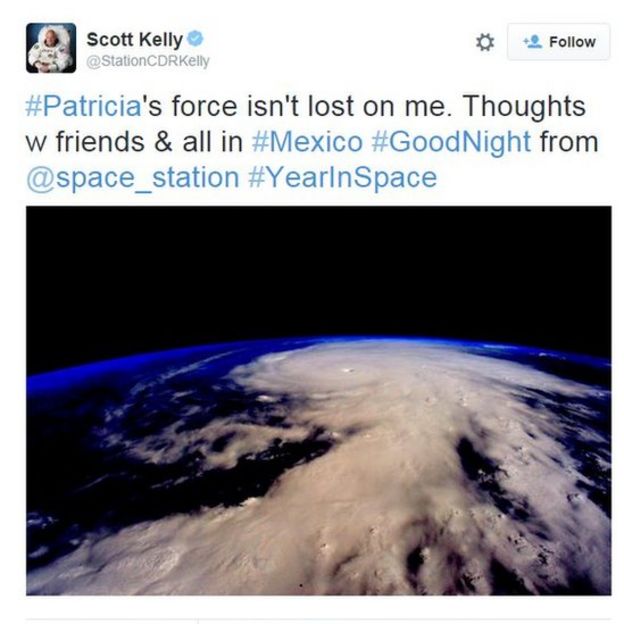
“The first reports confirm that the damage has been smaller than that corresponding to a hurricane of this magnitude,” Mr Pena Nieto said in a televised address.
Mexican federal police said only “minor landslides and fallen trees” had so far been reported in Colima.
But the government has warned that ash from the Colima volcano, which has become increasingly active this year, could combine with heavy rainfall to trigger huge mudflows.
Some 400,000 people live in vulnerable areas, according to Mexico’s National Disaster Fund.
Hurricane Patricia: As it happened
Key questions about Hurricane Patricia
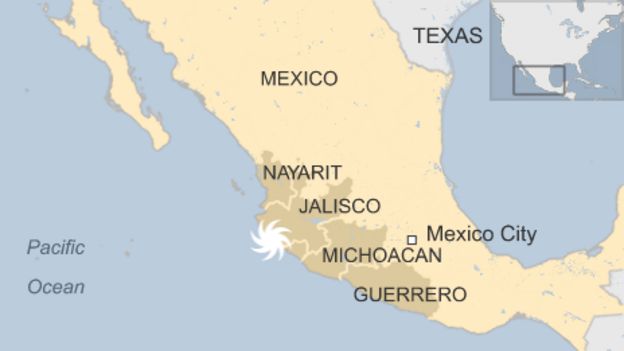

The city of Manzanillo experienced stormy conditions ahead of the hurricane’s arrival
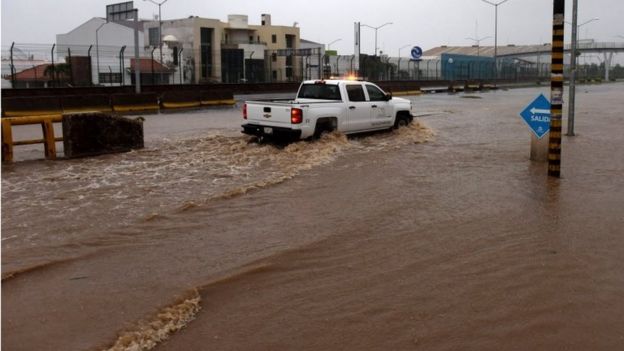
Further heavy rain is forecast for northern Mexico as the storm crosses land
Patricia reached land in the Cuixmala area of the western Jalisco state, some 85km (55 miles) from the port city of Manzanillo.
The US National Hurricane Centre said Patricia hit the coast with winds of 265km/h (165mph).
At one point before landfall, the hurricane’s winds had been strong enough “to get a plane in the air and keep it flying”, World Meteorological Organization spokeswoman Claire Nullis said.
Video filmed in the port city of Manzanillo shortly before the hurricane struck showed trees bending in severe wind.
While sheltering with his family in Manzanillo, Jacob Lozano Salazar told the BBC: “We’re all safe but it’s really ugly here on the coast.”
Residents had stocked up on food and other supplies, while shop owners boarded up windows.
BBC
 Q FM Africa's Modern Radio
Q FM Africa's Modern Radio